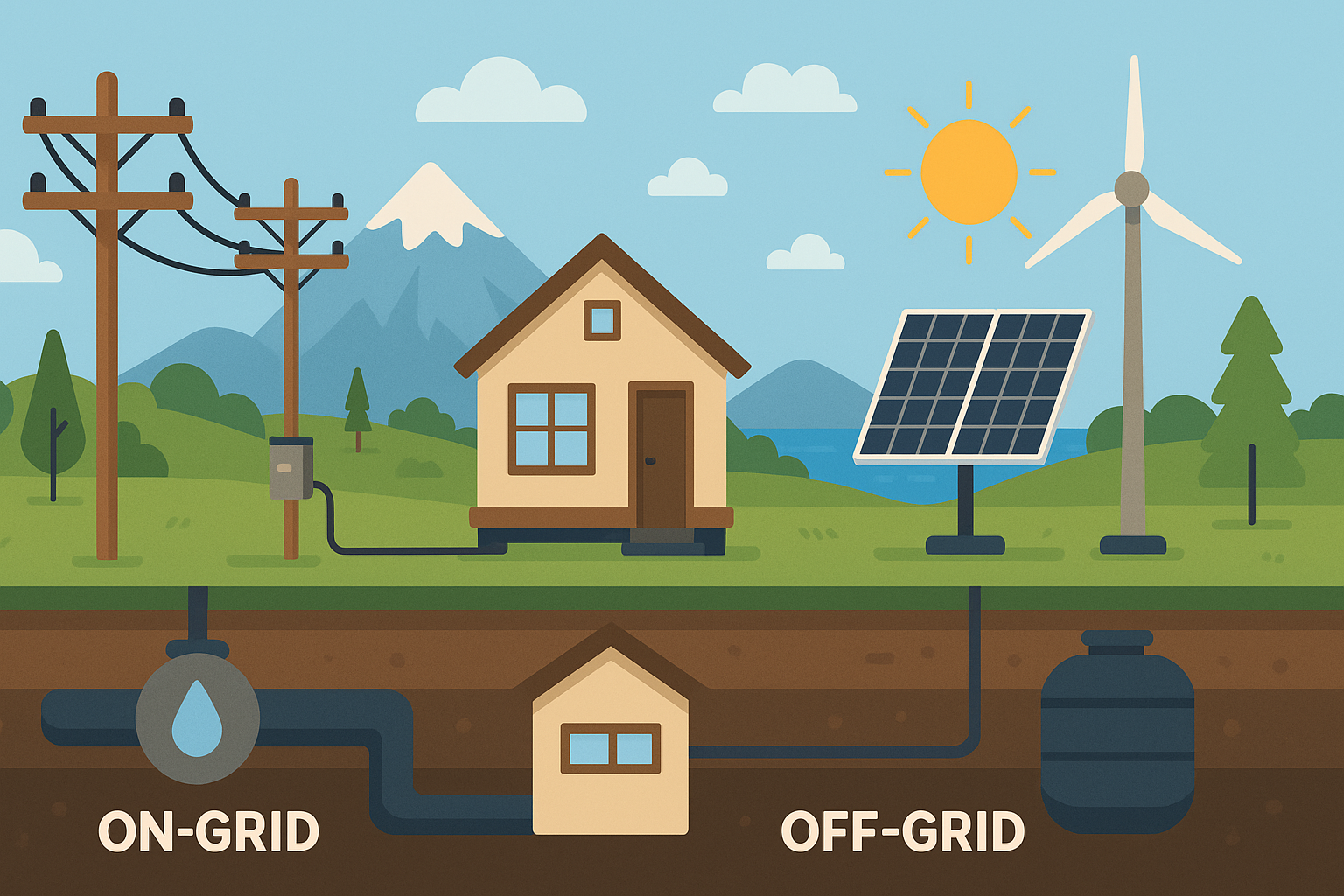
Tiny Home Utilities Canada: Exploring On-Grid vs Off-Grid and Innovative Utility Solutions
Estimated reading time: 8 minutes
Key Takeaways
- Understanding the distinction between on-grid utilities and off-grid solutions is essential for tiny home living in Canada.
- Compliance with CSA certification and local standards ensures safety and reliability.
- Innovative systems like solar microgrids and modular utility pods are shaping the future of tiny home infrastructure.
- Choosing the right utility setup—on-grid, off-grid, or hybrid—depends on location, budget, and personal sustainability goals.
- Thorough research and consultation with local regulations are key to a successful and compliant tiny home project.
Table of contents
Introduction: Tiny Home Utilities Canada and the Path to Smarter, Greener Living
*Tiny home utilities Canada* have become a hot topic as more Canadians embrace the tiny home movement for its affordability, sustainability, and flexible lifestyle. As the movement grows, understanding the extensive range of utility options—water, power, and sewer—is key for a comfortable, compliant tiny house experience.
By exploring the differences between on-grid and off-grid setups, along with innovative solutions tailored for diverse site conditions and local regulations, tiny home enthusiasts can achieve smarter, greener living designs.
Tiny House Infrastructure: Understanding the Backbone of Utilities in Canada
Building a tiny home in Canada means more than just constructing a compact structure—it requires a reliable utility infrastructure. This includes:
- Structural Safety: Adhering to local building standards for safety and durability.
- Water Supply and Plumbing: Ensuring access to certified potable water and efficient plumbing systems.
- Electricity: Utilizing CSA-approved wiring whether connecting to the grid or using independent energy sources.
- Heating: Integrating efficient heating systems like propane, electric, or wood stoves designed for compact spaces.
- Sewer Management: Implementing effective solutions for both black water and greywater treatment.
Regulatory standards in Canada require strict adherence to provincial, municipal, and CSA guidelines. Specific points include zoning restrictions, permitting processes, and clear documentation of utility diagrams and engineering plans.
Useful resources: Tiny home on wheels comparison, Tiny home certification guide and insights from tiny home legalities in Canada.
On-Grid Utilities for Tiny Home Utilities Canada
On-grid setups connect your tiny home directly to municipal water, electricity, and sewer services. This approach is often used for:
- Accessory dwellings in urban backyards (Accessory Dwelling Units guide).
- Established mobile home parks.
- Properties serviced by municipal utilities.
Key steps for on-grid connections include:
- Submitting applications to local authorities for water, power, and sewer hookups.
- Providing detailed engineering and utility plans to meet compliance standards.
- Paying applicable connection fees based on location and complexity.
While on-grid solutions offer reliability, they may limit placement flexibility and require extensive paperwork.
Off-Grid Tiny Home Utilities Canada
Off-grid systems empower tiny homeowners by offering independence from municipal utilities. These setups are ideal for those in rural areas or seeking a self-sustaining lifestyle.
Core off-grid options include:
- Water: Systems such as rainwater harvesting (Rainwater Harvesting for Tiny Homes) and drilled wells.
- Power: Solar panels, wind turbines, propane generators, and battery banks provide energy independence. Discover solar powered ADU systems for more details.
- Sewer: Options like composting toilets (Composting Toilets Guide), greywater recycling (Greywater Recycling), and small-scale septic systems.
Despite higher initial investments and maintenance challenges, off-grid systems provide self-sufficiency, especially in remote or eco-focused setups.
Innovative Utility Solutions: The Future of Tiny Home Utilities Canada
Emerging innovative solutions are bridging the gap between on-grid and off-grid systems:
- Solar Microgrids: These scalable systems allow multiple tiny homes to share excess power (Tiny Home Community Solutions).
- Advanced Greywater Recycling Systems: Compact systems filter and reuse water for toilets, gardening, or landscaping.
- Modular Utility Pods: Self-contained units that simplify installation and ensure easy compliance with utility standards.
Such innovations are already seeing use in Canadian projects, from BC eco-villages to Ontario tiny home parks, enhancing both resilience and sustainability.
Choosing Utilities: Key Factors for Tiny Home Owners in Canada
When selecting the right utility solution, consider:
- Location: Urban settings ease on-grid connections while rural areas may require off-grid setups (Rural Tiny Home Opportunities).
- Budget: Weigh initial connection fees against long-term maintenance costs (Financing Options).
- Environmental Goals: Opt for systems that reduce your carbon footprint, such as solar or hybrid solutions (Sustainable Living Homes).
- Regulatory Environment: Check local bylaws and permit requirements (Canadian ADU Regulations).
It is important to consult local authorities and experienced professionals to find the perfect blend of functionality, sustainability, and compliance.
Conclusion: Building the Future of Tiny Home Utilities Canada
Tiny home utilities in Canada span a wide spectrum—from reliable on-grid hookups to independent off-grid systems and cutting-edge hybrid models. Each option has its unique benefits and challenges, making thorough research, regulatory compliance, and personal assessment essential for success.
With innovations such as solar microgrids, advanced greywater systems, and modular utility pods paving the way, the tiny home movement is moving towards a more sustainable and resilient future. Begin your journey by consulting local guidelines, researching provincial codes, and connecting with experts in the field.
For more detailed guidance, explore resources like tiny home comparisons and tiny home legalities in Canada.
Frequently Asked Questions
Q1: What factors should I consider when choosing between on-grid and off-grid utilities?
A: Consider your location, budget, local zoning and building codes, as well as your environmental and lifestyle goals. On-grid systems offer convenience, while off-grid solutions are ideal for independence and sustainability.
Q2: Are there specific regulations for tiny home utility installations in Canada?
A: Yes, local municipalities and provinces have distinct regulations. Detailed guidelines can be found in resources like the Tiny Home Certification Guide and other regional documentation.
Q3: How do innovative solutions like solar microgrids benefit tiny home communities?
A: Solar microgrids allow for scalable energy solutions, enabling community energy sharing, increased reliability, and reduced dependency on the municipal grid.

Leave a Reply